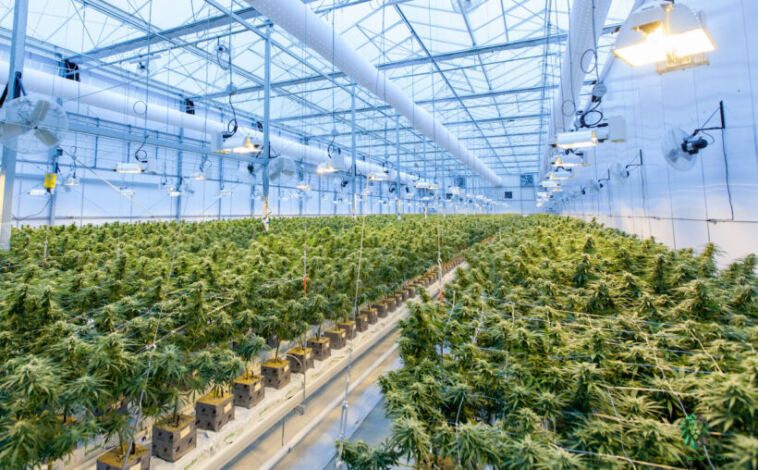- Like
- SHARE
- Digg
- Del
- Tumblr
- VKontakte
- Flattr
- Buffer
- Love This
- Save
- Odnoklassniki
- Meneame
- Blogger
- Amazon
- Yahoo Mail
- Gmail
- AOL
- Newsvine
- HackerNews
- Evernote
- MySpace
- Mail.ru
- Viadeo
- Line
- Comments
- Yummly
- SMS
- Viber
- Telegram
- JOIN
- Skype
- Facebook Messenger
- Kakao
- LiveJournal
- Yammer
- Edgar
- Fintel
- Mix
- Instapaper
- Copy Link
Introduction
The cannabis industry is witnessing remarkable growth and development, fueled by changing legal landscapes and increased demand.
To ensure sustainable cultivation practices and maximize yields, the industry is turning to the power of Artificial Intelligence (AI) technologies.
AI has the potential to revolutionize cannabis cultivation by optimizing various processes, increasing efficiency, and improving overall quality.
Let’s explore the ways in which AI is set to improve cannabis cultivation and shape the future of the industry.
Precision Growing
AI brings precision to cannabis cultivation by leveraging data-driven insights and advanced analytics. Here’s how it helps:
1. Data-Driven Decision Making
AI systems can collect and analyze vast amounts of data, including environmental conditions, nutrient levels, and plant health metrics. By correlating these variables, AI algorithms can provide growers with real-time insights and recommendations, enabling them to make informed decisions on irrigation, lighting, and nutrient supplementation.
2. Climate Control Optimization
AI-powered systems monitor and adjust environmental conditions, such as temperature, humidity, and CO2 levels, based on real-time data. This ensures optimal growing conditions for cannabis plants, enhancing photosynthesis, growth rates, and overall crop health.
3. Nutrient Management
AI can analyze soil composition and monitor nutrient levels in real-time. By adjusting nutrient formulations and delivery systems, AI ensures that plants receive the right balance of nutrients throughout their growth cycle, leading to healthier plants and improved yields.
Disease and Pest Management
AI plays a crucial role in detecting and managing diseases and pests, protecting cannabis crops from potential threats. Here’s how AI contributes:
1. Early Disease Detection
AI-powered image recognition systems can analyze images of cannabis plants, identifying subtle signs of diseases, nutrient deficiencies, or pest infestations. By detecting these issues at an early stage, growers can take prompt action to mitigate damage and prevent the spread of diseases throughout the crop.
2. Pest Monitoring
AI can integrate sensor networks and cameras to monitor pests in cultivation facilities. By analyzing data on pest behavior and movement patterns, AI algorithms can provide real-time alerts, enabling growers to implement targeted pest control measures and minimize crop losses.
3. Integrated Pest Management
AI can assist in implementing integrated pest management strategies by recommending the use of biological controls, optimizing pesticide applications, and monitoring the effectiveness of pest control measures. This approach reduces reliance on chemical pesticides and promotes sustainable cultivation practices.
Yield Prediction and Optimization
AI enables growers to accurately forecast and optimize crop yields, maximizing productivity and profitability. Here’s how AI helps:
1. Yield Prediction Models
AI algorithms analyze historical and real-time data, including environmental conditions, nutrient levels, and growth patterns, to develop predictive models. These models help growers forecast crop yields, facilitating better resource allocation, inventory management, and market planning.
2. Optimization Strategies
AI algorithms can identify optimal cultivation practices by analyzing data on various cultivation parameters, such as light intensity, irrigation schedules, and nutrient formulations. By recommending specific adjustments, AI helps growers optimize resource usage, improve crop uniformity, and achieve consistent high-quality yields.
3. Crop Breeding and Genetics
AI assists breeders in developing new cannabis strains with desired traits. By analyzing genetic data, chemical profiles, and consumer preferences, AI algorithms can guide breeding programs, accelerating the development of strains with specific cannabinoid profiles, growth characteristics, and disease resistance.
Resource Efficiency
AI technologies optimize resource usage in cannabis cultivation, leading to reduced costs and environmental impact. Here’s how AI contributes:
1. Energy Management
AI-powered systems monitor energy consumption in cultivation facilities, identifying inefficiencies and recommending energy-saving measures. By adjusting lighting schedules and HVAC systems based on real-time data and energy demand, AI helps reduce electricity costs and promotes sustainability.
2. Water Conservation
AI can analyze soil moisture levels, weather forecasts, and plant water requirements to optimize irrigation practices. By providing precise watering recommendations, AI minimizes water wastage and ensures that plants receive optimal hydration.
3. Waste Reduction
AI systems can analyze data on plant growth, nutrient absorption, and waste levels to optimize nutrient delivery and minimize runoff. This promotes responsible nutrient management, reduces environmental pollution, and ensures that nutrients are efficiently utilized by plants.
The Takeaway
Artificial Intelligence is set to revolutionize cannabis cultivation by introducing precision, efficiency, and sustainability to the industry.
By leveraging data-driven insights, AI technologies optimize cultivation practices, disease management, and resource usage, resulting in improved crop yields, enhanced quality, and reduced environmental impact.
As the cannabis industry continues to evolve, embracing AI in cultivation processes will be crucial for growers to stay ahead, maximize profitability, and contribute to a sustainable future.
The integration of AI in cannabis cultivation marks a significant milestone in the industry’s quest for innovation and excellence.


